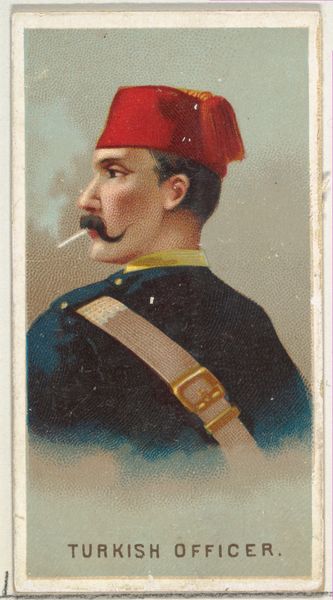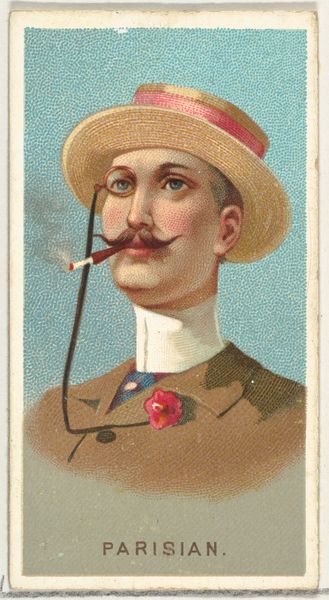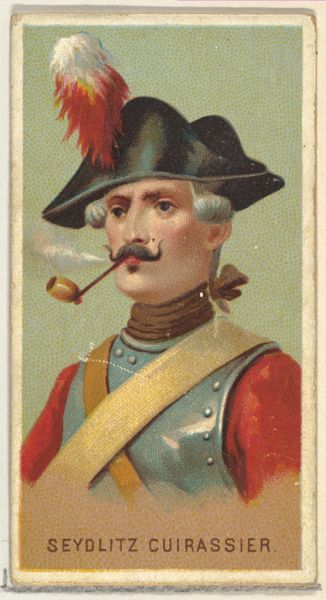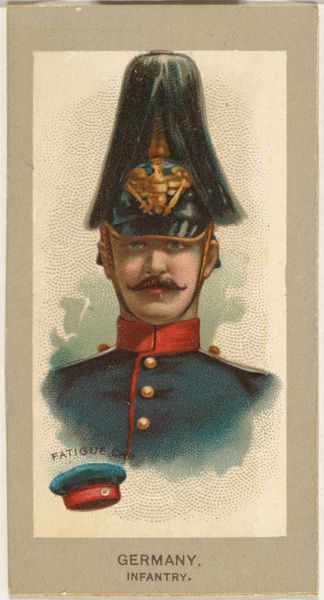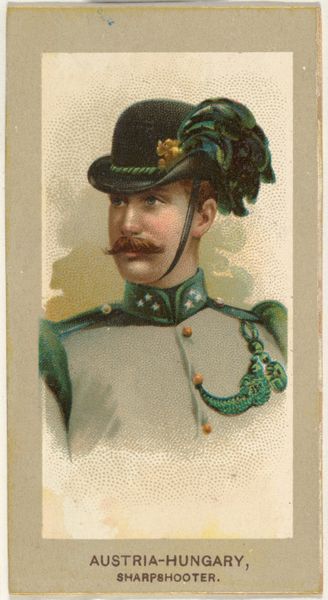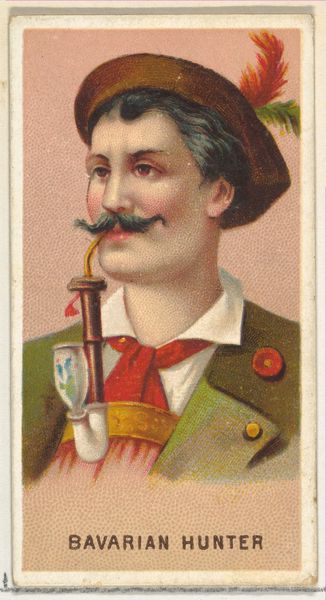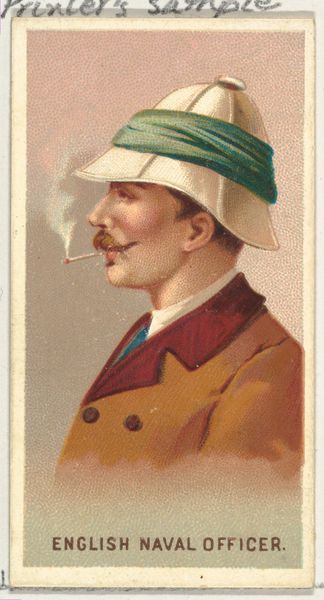
Austrian Soldier, from World's Smokers series (N33) for Allen & Ginter Cigarettes 1888
0:00
0:00
drawing, coloured-pencil, print
#
portrait
#
drawing
#
coloured-pencil
# print
#
caricature
#
coloured pencil
#
coffee painting
#
soldier
#
men
#
academic-art
#
portrait art
Dimensions: Sheet: 2 3/4 x 1 1/2 in. (7 x 3.8 cm)
Copyright: Public Domain
Editor: This is "Austrian Soldier" from the "World's Smokers" series, made by Allen & Ginter Cigarettes in 1888. It’s a small print, really delicate, and the colours are surprisingly vibrant. The soldier himself has a sort of nonchalant air about him. How would you interpret this piece, particularly in its historical context? Curator: These cards are fascinating relics of a time when tobacco companies actively participated in shaping cultural perceptions. The “World’s Smokers” series exemplifies the rise of consumer culture and how imperialist powers represented other cultures to a domestic audience. How do you think the depiction of an Austrian soldier within this series might contribute to a sense of national identity among Americans? Editor: Well, by showing a soldier from another nation, especially a powerful empire at the time, maybe it suggests America's growing presence on the global stage, creating a sense of parity or even competition. Is that accurate? Curator: Precisely. It is worth thinking about how imagery like this served as both a form of entertainment and a subtle assertion of power. What do you notice about his attire? Editor: The uniform is very detailed with sharp contrasts, especially with the gold embellishments and the red star. It feels… idealized. Curator: It is important to consider who created the image, and why they presented him that way. Cigarette card series weren’t just innocent diversions; they participated in broader discussions about class, race, and international relations. These tiny images constructed worldviews. What strikes you most now that you know this? Editor: I guess, I hadn't thought about the political implications of something seemingly so trivial. It’s eye-opening to realize how even the smallest art form can reflect and reinforce the ideologies of its time. Curator: Indeed. Studying these pieces is to study the intersection of consumerism and nationalism. Thank you, Editor.
Comments
No comments
Be the first to comment and join the conversation on the ultimate creative platform.



